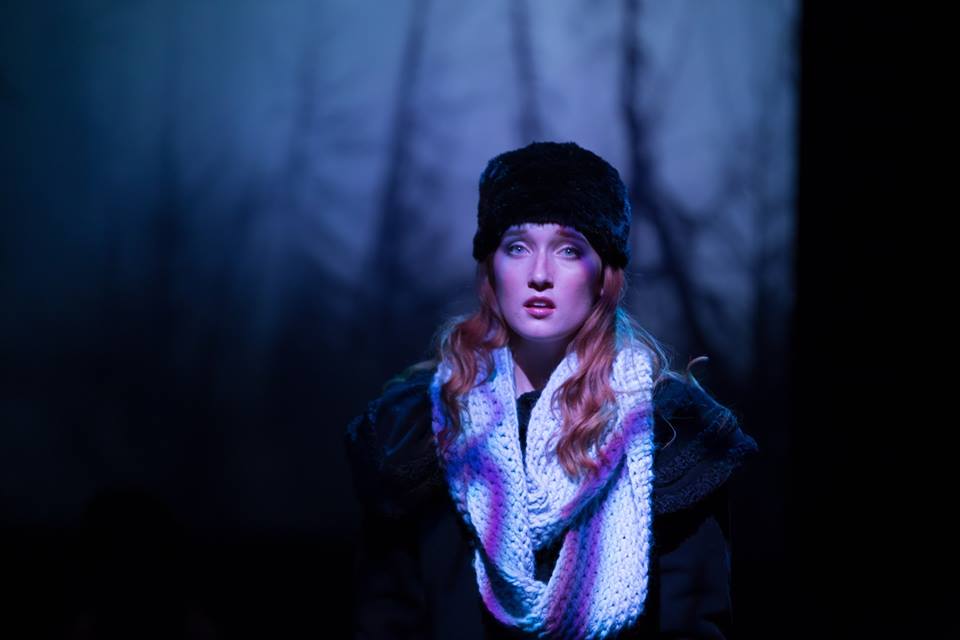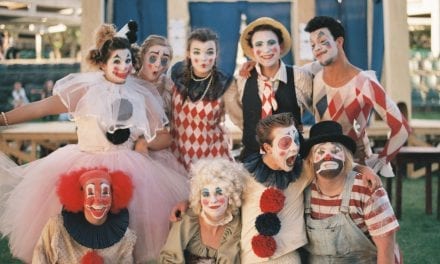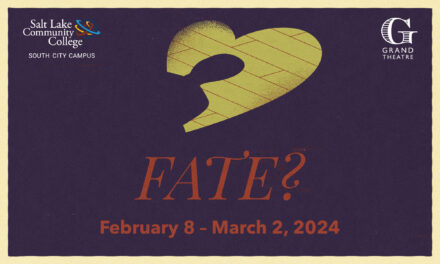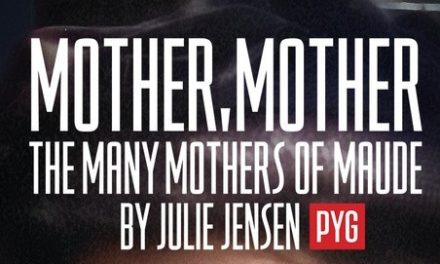SALT LAKE CITY — We (and by “we,” I am referring to any person attracted to the male of the species), all know one: a man who, rather inexplicably in most cases, possesses that indefinable quality, that magnetic draw, that lures people to him in droves. He may not even be deserving of all the attention. He may be cold, indifferent, or downright cruel—yet there is no resisting him. He has the “Kavorka.” This is the phenomenon examined in the unique little play Don Juan Returns From War by German playwright Odon von Horvath, whose script bears the influence of the post-Word War II era.
In the play, the lead character (who is unnamed, but referred to as the eponymous Don Juan), returns from war and makes an attempt to piece himself back together by searching for a lost love. Unsuccessful in his search, he returns to his former life as a Lothario, cycling through numerous women while suffering under wavering health and sanity.
The standout aspect of this particular production was the solid and decisive direction by Mark Fossen, who has an enormous strength for creating breathtaking imagery on stage. There were moments wherein I found myself lost in a lighting choice or an obviously carefully choreographed blocking arrangement that turned the stage and the actors on it into a living, breathing piece of art. Two screens on either side of the stage projected images to set the scene, and they were incorporated into the action in exciting and innovative ways, particularly in a scene where a jilted lover (played by Sydney Shoell), angrily cuts the eyes from a photograph of the lead character. My favorite visual moment, however, was the very last scene in which a fog machine was employed and dancing lights depicting snowfall swirled through it, creating an ethereal and heavenly picture. Fossen’s eye for exquisite visuals was complemented beautifully with set design by Nina Vought, whose layered platforms and meticulously textured stage decoration was eye catching.
 The play took a few scenes to warm up, but once it did, it was delightful. The layers of cruelty in Don Juan (played by Max Huftalin) and, well, his douchebaggery, often reached comical heights. And the way Huftalin played the role—starkly straight—worked well, though at first I had my doubts. Huftalin played the notorious womanizer with subtle even-handedness, which was a totally surprising take on an infamous character. Perhaps my favorite moment of his was one that flew by so quickly it could have gone by unnoticed: in an exchange between him and a passionate young woman (played by Ashley Horrocks) who has fallen in love with him, but cannot do anything about it as she is underage. “Don” responds to her desperate ranting by walking abruptly up to her, hovering too near her face for only a moment, and then backing off. Huftalin’s ability to create palpable electricity in a mere couple of seconds is a mark of a gifted performer, and his interpretation proof that powers of seduction can come from surprising sources.
The play took a few scenes to warm up, but once it did, it was delightful. The layers of cruelty in Don Juan (played by Max Huftalin) and, well, his douchebaggery, often reached comical heights. And the way Huftalin played the role—starkly straight—worked well, though at first I had my doubts. Huftalin played the notorious womanizer with subtle even-handedness, which was a totally surprising take on an infamous character. Perhaps my favorite moment of his was one that flew by so quickly it could have gone by unnoticed: in an exchange between him and a passionate young woman (played by Ashley Horrocks) who has fallen in love with him, but cannot do anything about it as she is underage. “Don” responds to her desperate ranting by walking abruptly up to her, hovering too near her face for only a moment, and then backing off. Huftalin’s ability to create palpable electricity in a mere couple of seconds is a mark of a gifted performer, and his interpretation proof that powers of seduction can come from surprising sources.
 The rest of the cast is made up of nine women to the one man (a ratio I must admit I found refreshing, particularly as a major theme of the piece is gender roles), and the women cycle through a myriad characters, each of them making their mark on the leading man. All nine of these women were astonishingly talented, playing moments of comedy and drama with deftness. Highlights from these characters included the aforementioned Ashley Horrocks as “Second Daughter,” a fifteen-year-old girl obsessed with the idea of becoming a dancer, Amanda Corbett as the hilarious and crotchety “Grandmother,” and Hannah Minshew as “Mother,” the owner of the house in which Don Juan rents a room and the character for whom I felt the most sympathy. Indeed, with a show consisting of an ever-revolving cavalcade of characters and moments running from one into the next, it is difficult to write on each performer, though they all did beautifully.
The rest of the cast is made up of nine women to the one man (a ratio I must admit I found refreshing, particularly as a major theme of the piece is gender roles), and the women cycle through a myriad characters, each of them making their mark on the leading man. All nine of these women were astonishingly talented, playing moments of comedy and drama with deftness. Highlights from these characters included the aforementioned Ashley Horrocks as “Second Daughter,” a fifteen-year-old girl obsessed with the idea of becoming a dancer, Amanda Corbett as the hilarious and crotchety “Grandmother,” and Hannah Minshew as “Mother,” the owner of the house in which Don Juan rents a room and the character for whom I felt the most sympathy. Indeed, with a show consisting of an ever-revolving cavalcade of characters and moments running from one into the next, it is difficult to write on each performer, though they all did beautifully.
If there was one thing I would have wished for this production, however, it would have been for the actors to embrace the vividly stylistic manner of the play. The script is at times starkly clichéd, which can often occur when a foreign script is translated into English, and I thought the play could have been improved by actors adopting the same sardonic and exaggerated sensibility of the words they spoke while maintaining their already gorgeous moments of honest emotion. I believe this talented group would have been up to the challenge.
Don Juan has only a short run, and I hope it garnishes the audience it deserves in its final nights. It is an unusual piece for this area, and very worth seeing if one has the opportunity.





